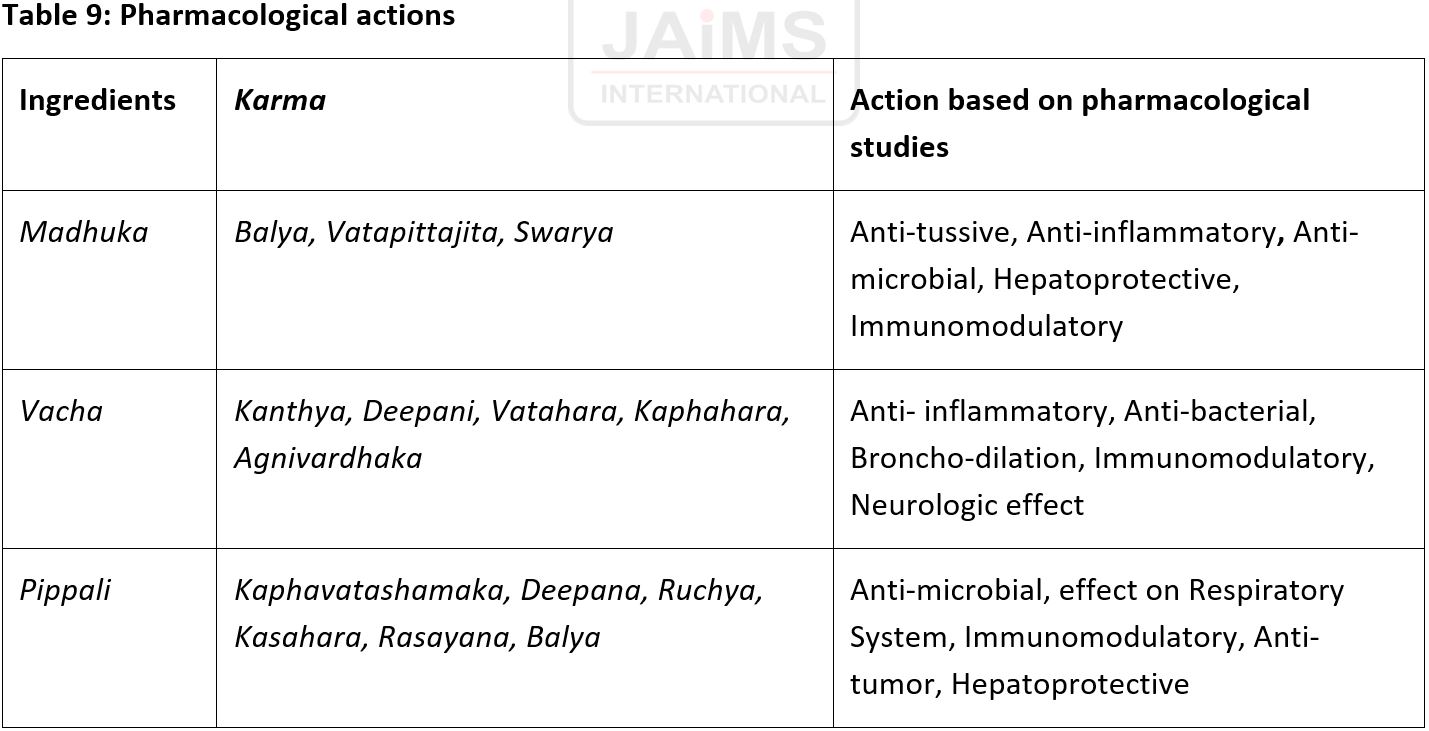A Comparative Clinical Study to Evaluate the Efficacy of Madhukadi Ghrita and Samangadi Leha in enhancing Vyadhikshamatva w.s.r. to Immunity in Children
DOI:
https://doi.org/10.21760/jaims.10.5.3Keywords:
Vyadhikshamatva, Balya, Immunity, Madhukadi Ghrita, Samangadi LehaAbstract
Background: Despite tremendous progress in recent decades, infectious diseases remain a leading cause of morbidity and mortality in pediatric population worldwide. Optimal immune health directly depends upon Hitakara Aahar and Vihar. Maintaining a diet and lifestyle aligned with one’s Satmya help strengthening the defense mechanism of the body. Equilibrium of Doshas, Bala and Ojas capable of effectively combating disease. Strengthening the immune system in a natural way there are many formulations like Rasayana, Balya and Ojovridhikara drugs. Aims and Objective: To evaluate, compare the efficacy and clinical safety of Madhukadi Ghrita and Samangadi Leha in children. Materials and Methods: A randomized, comparative clinical trial was conducted on 40 pediatric patients belonging to age group 2-10 years for 4 weeks who were suffering from recurrent RTI and GIT infections. The patients were divided into two groups: Group I received Madhukadi Ghrita, while Group II was treated with Samangadi Leha. The clinical efficacy of both interventions was assessed based on subjective and objective criteria, symptomatic relief and overall improvement. Results: Both groups significantly improved clinical symptoms. Madhukadi Ghrita is preferable for immediate symptom alleviation, whereas Samangadi Leha is beneficial for long-term immune system support. Conclusion: This study seeks to provide safe and effective Ayurvedic alternatives for enhancing Vyadhikshamatva (immunity) in children, fostering long-term immune resilience and overall well-being.
Downloads
References
https://data.unicef.org/topic/child-srvival/under-five-mortality/
Abbas, A. K., Lichtman, A. H., & Pillai, S. (2017). Cellular and Molecular Immunology (9th ed.). Elsevier.
Rohini Dharwal, Rakesh Sharma. Immune enhancing measures in Children. J Ayurveda Integr Med Sci [Internet]. 2024Jun.15 [cited 2025Jun.13];9(4):150 -154.
Tripathi, Jyoti & Singh, Heisnam. (1999). The Concept and Practice of Immunomodulation in Ayurveda and the Role of Rasayanas as Immunomodulators. Ancient science of life. 19. 59-63.
Singh RH. Foundations of Immunology in Ayurvedic Classics. Indian Journal of History of Science, 50.1 (2015) 83-94.















